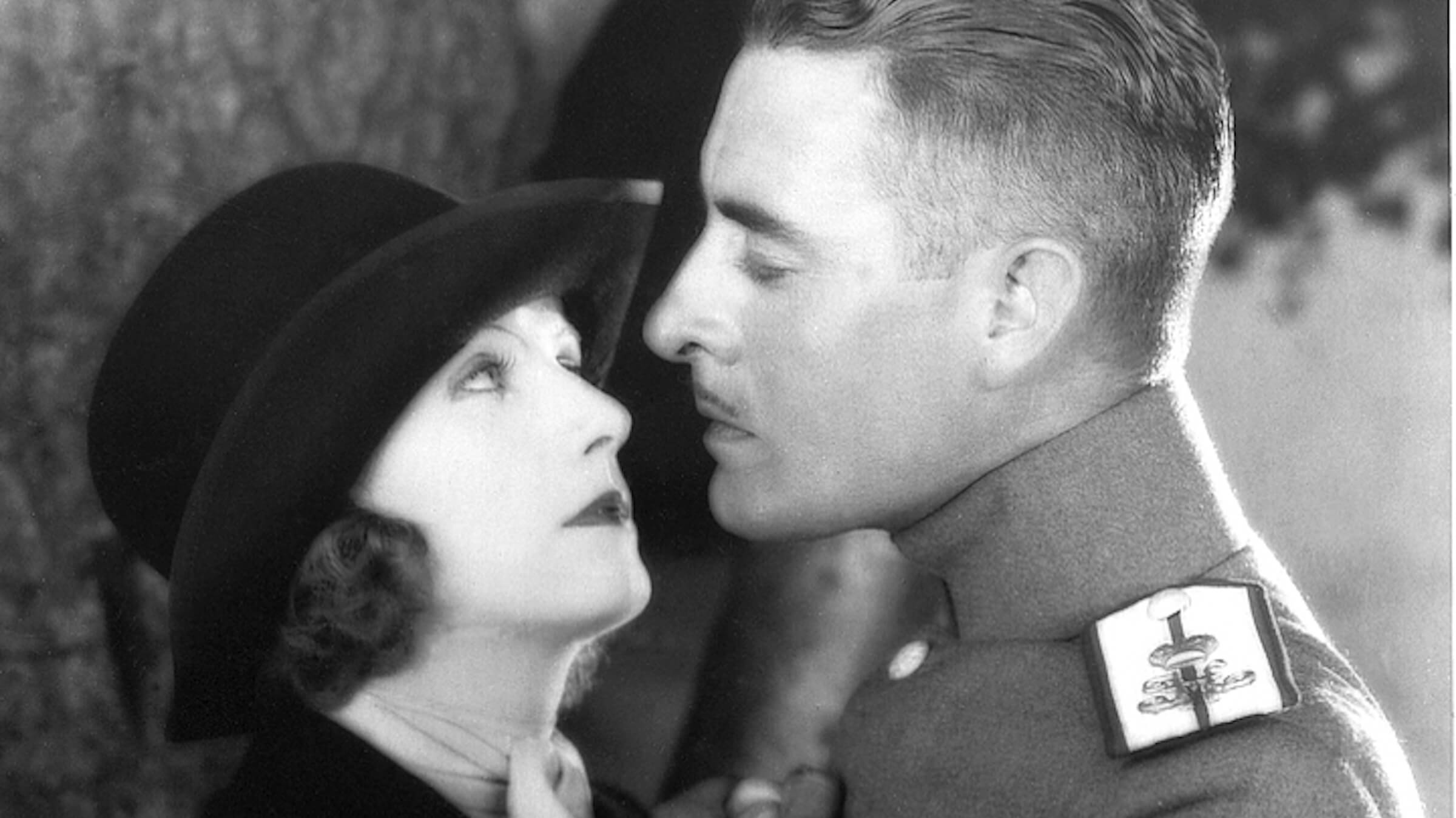Tolstoy’s Anna Karenina (1877) was re-titled Love when it reached the screen in November of 1927, but it’s possible that any story starring John Gilbert and Greta Garbo would have been given this title by studio executives. What better way to capitalize on the movie magazines, which were breathlessly reporting that Garbo was on the verge of marrying her costar. Love was highly profitable (costing MGM $488,000, it earned more than $1,600,000 in rentals worldwide) with reviews to match. Time wrote in December 1927, “It isn’t Tolstoy, but it is John Gilbert and Greta Garbo, beautifully presented and magnificently acted,” and Variety added, “They are in a fair way of becoming the biggest box office team this country has yet known.”
John Gilbert was born John Pringle, the son of stock company parents, on July l0, 1899, in Logan, Utah. He spent most of his childhood backstage and in boardinghouses, lonely and ignored, while his beautiful if unmaternal mother toured with one stock company after another following her early divorce. Because of this itinerant lifestyle, Gilbert became almost completely self-educated—he was a voracious reader. When he was 14, his mother died and he was completely on his own. The future matinee idol was an extremely likeable if near-starved teenager (115 lbs. at almost six feet tall) when he entered films in 1915 as a $15-a-week extra in westerns being filmed in the wilds of Santa Monica. Within a few years, directors began to notice the eager young bit player’s growing photogenic qualities and gradually cast him in featured roles, some of them unsympathetic character parts, which Gilbert welcomed.
In 1924, Gilbert rose from leading man to star at the newly formed Metro-Goldwyn-Mayer studio in its first production, He Who Gets Slapped, starring Lon Chaney and Norma Shearer. One hit soon followed another: The Big Parade (for which Gilbert won Photoplay’s Best Performance medal, a forerunner to the Academy Award) and The Merry Widow in 1925; La Bohème and Bardelys the Magnificent in 1926. Gilbert was second only to Rudolph Valentino as reigning “Great Lover of the Screen” in publicity parlance. Indeed, he was actually better accepted by both male and female American audiences than Valentino and played a wider range of roles, still welcoming opportunities for offbeat or unromantic casting, as in The Snob (1924) and Man, Woman, and Sin (1927). But the “Great Lover” sobriquet was hard to shake and rankled him as it led to roles in increasingly formulaic film stories.
In 1925, MGM general manager Louis B. Mayer signed a new European discovery to a five-year contract: 19-year-old Greta Garbo (b. Greta Gustafson, 1905), but the studio was perplexed as to how to best “type” the special quality she seemed to possess. It was on her third film for MGM, Flesh and the Devil, that she met her new costar John Gilbert. He was charmed by her vulnerability, which was reminiscent of his own, and he guided her through the filming. Their mutual rapport was instantaneous and the chemistry was evident on-screen. Garbo trusted Gilbert implicitly, telling Photoplay in 1930, “I don’t know how I should have managed if I had not been cast opposite John Gilbert …. If he had not come into my life at this time, I should probably have [gone] home to Sweden at once, my American career over.”
The MGM adaptation of Anna Karenina was originally conceived as a project for Lillian Gish before it was given to Garbo as her first sympathetic role, and even then filming was begun twice; first as Anna Karenina with Ricardo Cortez as Vronsky, then scrapped and relaunched as Love with John Gilbert and director Edmund Goulding. Despite these reshufflings in cast and crew the studio decided to safeguard the new film’s box office appeal against even the threat of Tolstoy: two alternate endings were scripted and filmed—one happy, one tragic—and exhibitors were given their choice, with the result that the East and West coasts opted for Tolstoy, while most places in between opted for the happy ending concocted by screenwriter Frances Marion. Both were successful. Gilbert and Garbo appeared in one more silent together, A Woman of Affairs in 1929, and one talking picture, Queen Christina, in 1933.
One of the regrettable and erroneous legends surrounding the end of the silent era concerns John Gilbert’s failure in sound films: that his voice was “high-pitched.” This rumor continued to circulate over the years as few of his sound films were available for reappraisal. His voice was a perfectly adequate light baritone and was quite skillful when put to use in a good film, such as the brilliant dark comedy Downstairs (1932), which Gilbert wrote. He was in the preproduction stages of the sophisticated jewel-thief comedy Desire with Marlene Dietrich when he died of heart failure in 1936. He was 33 years old.
In 1985, Leatrice Gilbert Fountain, daughter of John Gilbert and silent actress Leatrice Joy, wrote a compassionate and admirably researched biography of her famous father: Dark Star. The definitive biography of Greta Garbo to date is Barry Paris’s equally insightful and recommended 1995 Garbo.
Presented at SFSFF 1999 with live music by Dennis James on the Mighty Wurlitzer

